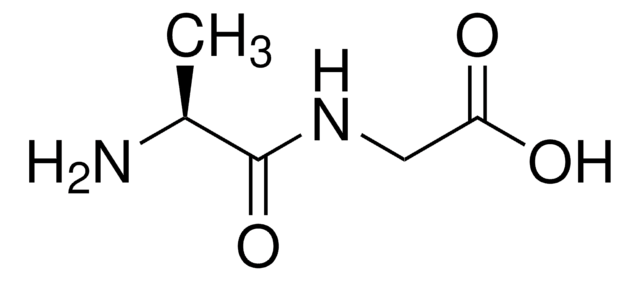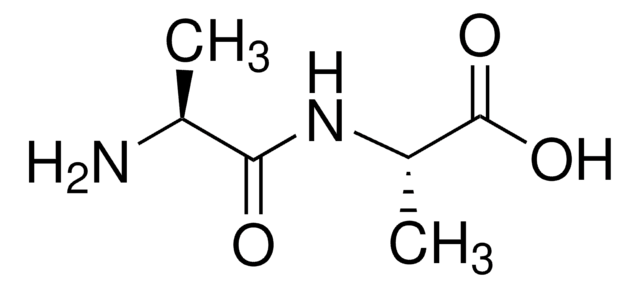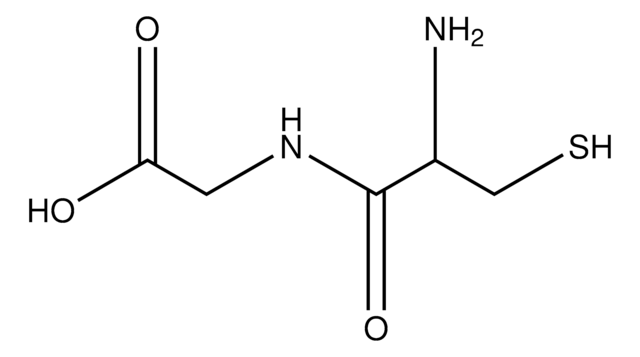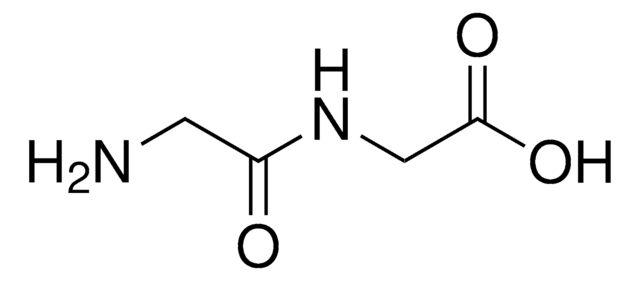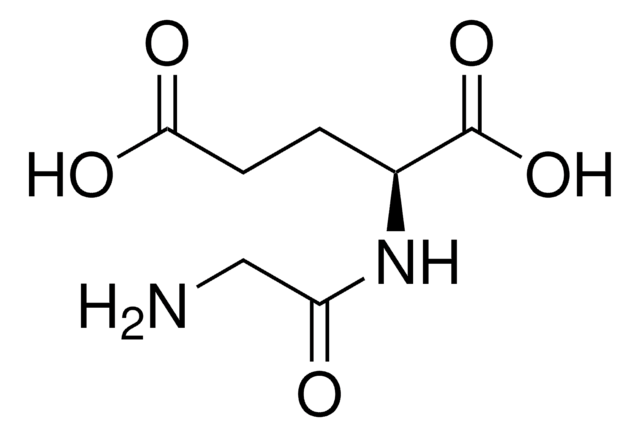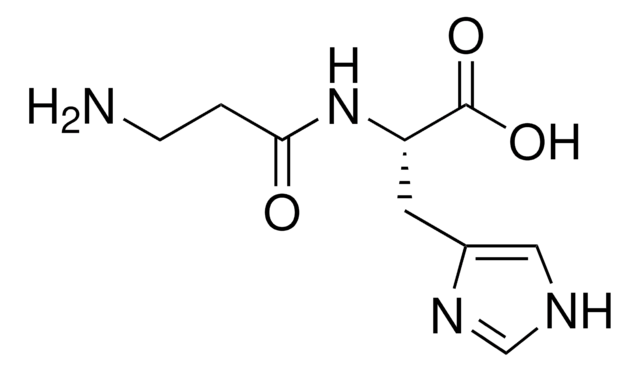推荐产品
product name
Gly-Gly-His,
化驗
≥98% (TLC)
形狀
solid
顏色
white
儲存溫度
−20°C
InChI
1S/C10H15N5O4/c11-2-8(16)13-4-9(17)15-7(10(18)19)1-6-3-12-5-14-6/h3,5,7H,1-2,4,11H2,(H,12,14)(H,13,16)(H,15,17)(H,18,19)
InChI 密鑰
PDAWDNVHMUKWJR-UHFFFAOYSA-N
Amino Acid Sequence
Gly-Gly-His
一般說明
Gly-Gly-His (GGH) tripeptide with carboxyl-terminal histidine residue is hydrophilic.
應用
Gly-Gly-His has been used:
- as a peptide test probe in the hydrophilic interaction liquid chromatography (HILIC) studies
- in the electrochemical modification of back-side contact transducers (BSC) electrodes in copper (Cu2+) sensing studies
- for the fabrication carbon nanotube electrode for detection of Cu2+ ions
生化/生理作用
Gly-Gly-His (GGH) tripeptide displays the affinity of copper (Cu2+) complexation. These complexes display good skin tolerance and may be useful in wound healing. GGH copper complexes are proposed to reduce tumor necrosis factor α (TNF-α)-based interleukin 6 (IL-6) secretion by in vivo studies with fibroblasts. GGH is used in comparative studies with other imidazole-containing peptides such as carnosine. An area of active application research involves the GGH binding of copper ions.
儲存類別代碼
11 - Combustible Solids
水污染物質分類(WGK)
WGK 3
閃點(°F)
Not applicable
閃點(°C)
Not applicable
個人防護裝備
Eyeshields, Gloves, type N95 (US)
其他客户在看
Meng Lin et al.
Biosensors & bioelectronics, 26(2), 940-945 (2010-07-16)
We developed a novel biosensor comprising a transducer of carboxyl end-capped overoxidized polypyrrole nanowire electrode and a probe of tripeptide (Gly-Gly-His) selectively cognitive of Cu2+. The developed sensor was demonstrated to specifically detect Cu2+ in the nanomolar range. The diameter
Emrys A Jones et al.
Journal of the American Society for Mass Spectrometry, 18(8), 1559-1567 (2007-07-03)
Through analyzing mixtures of compounds of known gas-phase basicities, the importance of this property on the secondary ions emitted from a surface under primary ion bombardment is investigated. The aim is to obtain a greater understanding of the ionization mechanisms
Meng Lin et al.
Analytica chimica acta, 746, 63-69 (2012-09-15)
A novel electrochemical biosensor based on functionalized polypyrrole (PPy) nanotube arrays modified with a tripeptide (Gly-Gly-His) proved to be highly effective for electrochemical analysis of copper ions (Cu(2+)). The vertically oriented PPy nanotube arrays were electropolymerized by using modified zinc
Jeff C Joyner et al.
Chemical communications (Cambridge, England), 49(21), 2118-2120 (2013-02-06)
Metallopeptides containing both the complex Cu(2+)-glycyl-glycyl-histidine (Cu-GGH) and the sequence WRWYCR were shown to possess antimicrobial activity against a variety of pathogenic bacteria, as well as bind to and cleave a variety of nucleic acids, suggesting potential mechanisms for antimicrobial
X Shi et al.
Chemical research in toxicology, 6(3), 277-283 (1993-05-01)
Electron spin resonance spin trapping was utilized to investigate the generation of free radicals from cumene hydroperoxide (cumene-OOH), tert-butyl hydroperoxide (tert-butyl-OOH), and H2O2 at pH 7.2 by Co(II) in the presence of cysteinyl and histidyl chelating agents. The spin trap
我们的科学家团队拥有各种研究领域经验,包括生命科学、材料科学、化学合成、色谱、分析及许多其他领域.
联系技术服务部门